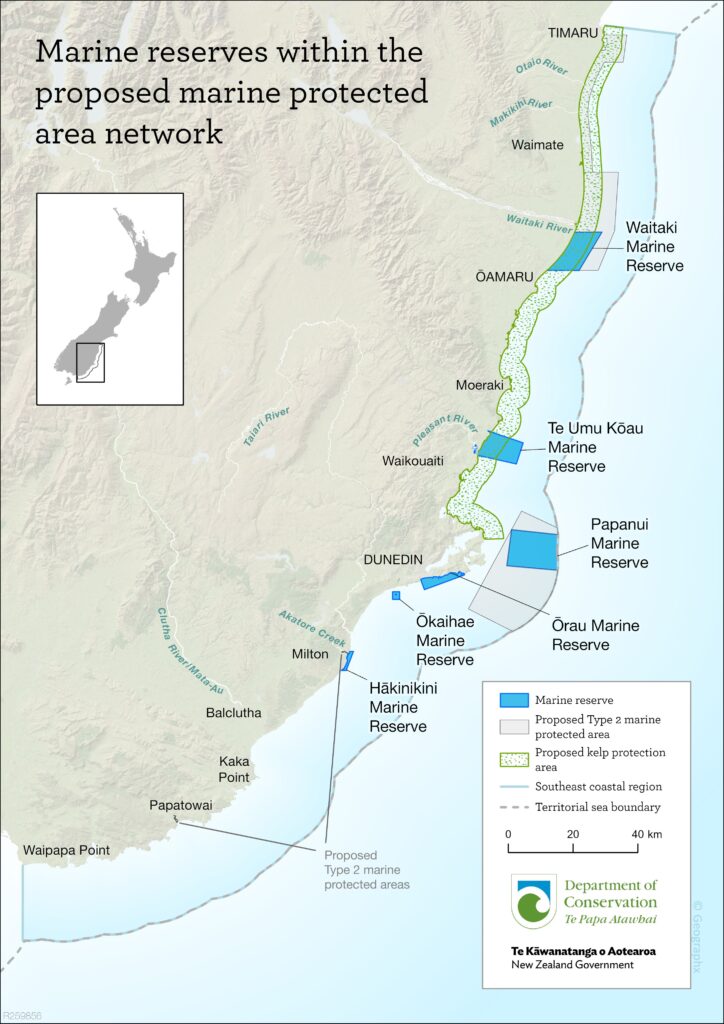Six new marine reserves in the lower South Island – home to some of the country’s most endangered species – have been unveiled.
Conservation Minister Willow-Jean Prime and Oceans and Fisheries Minister Rachel Brooking joined Kāi Tahu representatives in announcing the reserves, which are situated between Oamaru and The Catlins.
“Protecting our oceans and their biodiversity for future generations is important to this government,” Prime said.
“In August we announced our plans to protect the Hauraki Gulf. Today, we’re announcing six new marine reserves in the South Island.”
The announcement has angered some local fishing groups, who say the Otago marine area was not at risk and the process lacked proper consultation.
Prime said the new reserves increase the area in marine reserves around mainland New Zealand by more than two-thirds.

“This spectacular coastline from Oamaru to Southland is home to some of our most endangered species, like hoiho/yellow-eyed penguin, toroa/northern royal albatross and pakake/New Zealand sea lion.
“It includes estuarine and tidal lagoons, rocky reefs, offshore canyons, giant kelp forests and deepwater bryozoan or lace coral thickets, and an array of marine life that were under pressure from human activity.”
Prime said close engagement with mana whenua had been important and provisions have been made for Kāi Tahu to continue to access the marine reserve areas for practices that enhance their mātauraka Māori (traditional knowledge) and retrieve koiwi tākata (ancestral remains), artefacts and marine mammal remains.
“Kāi Tahu will work in partnership with the Department of Conservation to manage the marine reserves once they are in place.”
Brooking said The six marine reserves are the first step in creating a network of marine protection in the area, and build on the government’s track record of protecting the oceans.
“From tightening the rules to around fish being discarded at sea and putting cameras on commercial fishing vessels, to stopping bottom-trawling the vast bulk of the Hauraki Gulf, this is a government that understands you can’t have a successful commercial fishing industry in an unhealthy ocean,” Brooking said.
As well as the six marine reserves announced, the government is looking at using fisheries management regulations to protect a further five areas, along with a proposed kelp protection area. Brooking said 90% of more than 4000 submissions have shown there is broad backing for the proposed network.










